Great Descriptions To Bounce Off Of. Helps Brainstorming.

Great descriptions to bounce off of. Helps brainstorming.
More Posts from Risingstarling and Others
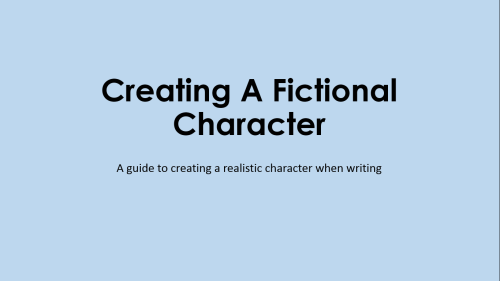

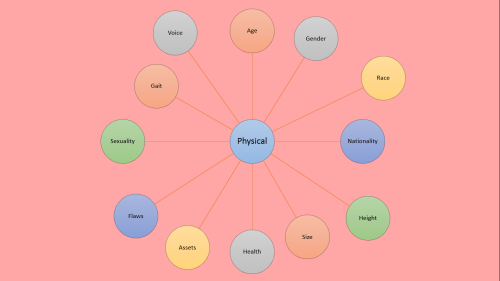

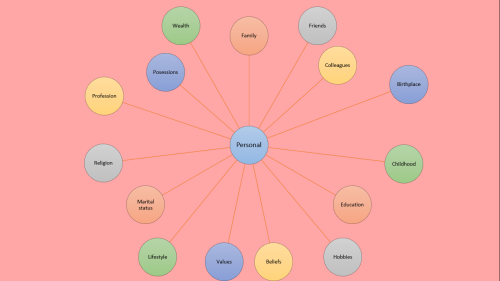
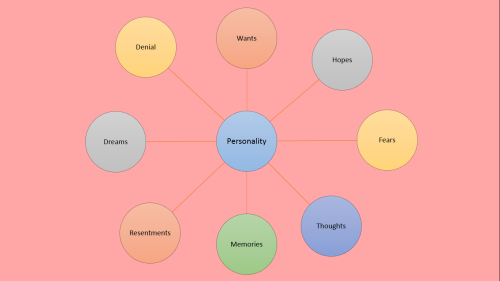
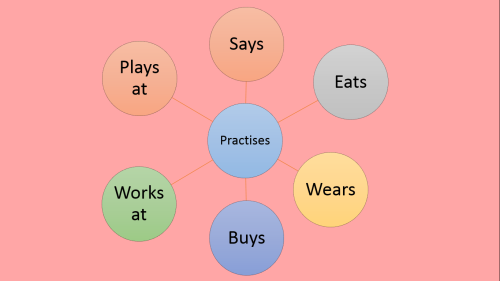
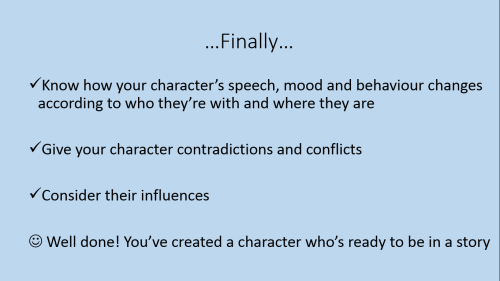
I made a slideshow about how to create a fictional character… I got most of the information from the ‘start writing fiction’ (free) course on the OpenUniversity website and found it incredibly useful so here’s a visual version for you :)









The memories I have for some of these shows disturb me
How do you write a fight scene without becoming repetitive? I feel like it just sounds like "she did this then this then this." Thanks so much!
I watch her as she fights. Her left leg flies through the air – a roundhouse – rolling into a spin. She misses, but I guess she’s supposed to. Her foot lands and launches her into a jump. Up she goes again, just as fast. The other leg pumps, high knee gaining altitude. The jumping leg tucks. Her body rolls midair, momentum carrying her sideways. She kicks. A tornado kick, they call it. The top of her foot slams into Rodrigo’s head, burying in his temple. Didn’t move back far enough, I guess.
His head, it snaps sideways like a ball knocked off a tee. Skull off the spine. His eyes roll back, and he slumps. Whole body limp. Legs just give out beneath him. He clatters to the sidewalk; wrist rolling off the curb.
She lands, making the full turn and spins back around. Her eyes are on his body. One foot on his chest. I don’t know if he’s alive. I don’t know if she cares. Nah, she’s looking over her shoulder. Looking at me.
The truth twists my gut. I should’ve started running a long time ago.
The first key to writing a good fight scene is to tell a story. The second key is having a grasp of combat rules and technique. The third is to describe what happens when someone gets hit. The fourth is to remember physics. Then, roll it all together. And remember: be entertaining.
If you find yourself in the “and then” trap, it’s because you don’t have a firm grasp of what exactly it is your writing. “He punched” then “She blocked” then “a kick” only gets you so far.
You’ve got to get a sense for shape and feeling, and a sense of motion. Take a page from the comic artist’s playbook and make a static image feel like it’s moving. Try to remember that violence is active. Unless your character is working with a very specific sort of soft style, they’re attacks are going to come with force. So, you’ve got to make your sentences feel like your hitting something or someone.
“Ahhh!” Mary yelled, and slammed her fist into the pine’s trunk. A sickening crack followed, then a whimper not long after.
Angie winced. “Feel better?”
Shaking out her hand, Mary bit her lip. Blood dripped from her knuckles, uninjured fingers gripping her wrist. She sniffed, loudly. “I…” she paused, “…no.”
“You break your hand?”
“I think so. Yeah.”
“Good,” Angie said. “Think twice next time before challenging a tree.”
Let your characters own their mistakes. If they hit something stupid in anger, like a wall or a tree then let them have consequences.Injury is part of combat. In the same way, “I should be running now” is. When the small consequences of physical activity invade the page, they bring reality with them.
People don’t just slug back and forth unless they don’t know how to fight, or their only exposure to combat is mostly movies or bloodsport like boxing. Either way, when one character hits another there are consequences. It doesn’t matter if they blocked it or even deflected it, some part of the force is going to be transitioned into them and some rebounds back at the person who attacked.
Your character is going to get hurt, and it’ll be painful. Whether that’s just a couple of bruises, a broken bone, or their life depends on how the fight goes.
However, this is fantasy. It is all happening inside our heads. Our characters are never in danger unless we say they are. They’ll never be hurt unless we allow it. A thousand ghost punches can be thrown and mean absolutely, utterly nothing at all to the state of the character. This is why it is all important to internalize the risks involved.
The writer is in charge of bringing a dose of reality into their fictional world. It is much easier to sell an idea which on some level mimics human behavior and human reactions. The ghost feels physical because we’ve seen it happen on television or relate to it happening to us when we get injured.
You’ve got five senses, use them. You know what it feels like to get injured. To be bruised. To fall down. To be out of breath. Use that.
Here’s something to take with you: when we fight, every technique brings us closer together. Unless it specifically knocks someone back. You need specific distances to be able to use certain techniques. There’s the kicking zone, the punching zone, and the grappling zone. It’s the order of operation, the inevitable fight progression. Eventually, two combatants will transition through all three zones and end up on the ground.
So, keep the zones in mind. If you go, “she punched, and then threw a roundhouse kick” that’s wrong unless you explain more. Why? Because if the character is close enough to throw a punch, then they’re too close to throw most kicks. The roundhouse will just slap a knee or a thigh against the other character’s ribs, and probably get caught. If you go, “she punched, rammed an uppercut into his stomach, and seized him by the back of the head”, then that’s right. You feel the fighters getting progressively closer together, which is how its supposed to work.
Use action verbs, and change them up. Rolled, rotated, spun, punched, kicked, slammed, rammed, jammed, whipped, cracked, etc.
You’ve got to sell it. You need to remember a human’s bodily limits, and place artificial ones. You need to keep track of injuries, every injury comes with a cost. Make sure they aren’t just trading blows forever.
I’ve seen advice that says fights all by themselves aren’t interesting. I challenge that assertion. If you’re good at writing action, then the sequence itself is compelling. You know when you are because it feels real. Your reader will tune out if it isn’t connecting, and the fight scene is a make or break for selling your fantasy. It is difficult to write or create engaging, well choreographed violence that a reader can easily follow and imagine happening.
-Michi
This blog is supported through Patreon. If you enjoy our content, please consider becoming a Patron. Every contribution helps keep us online, and writing. If you already are a Patron, thank you.

Virtue requires a delicate balance.
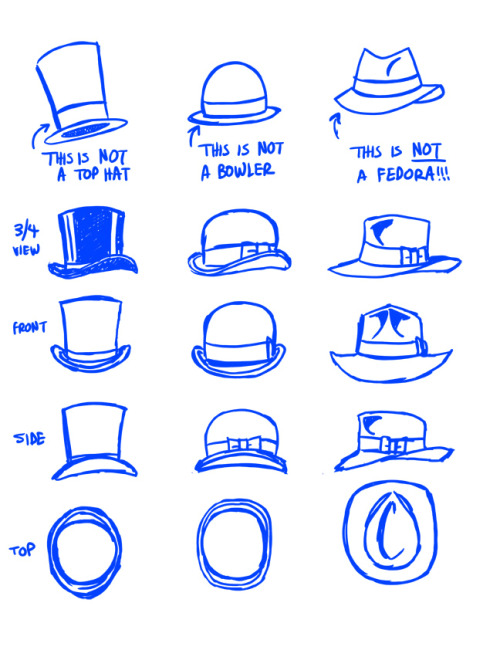
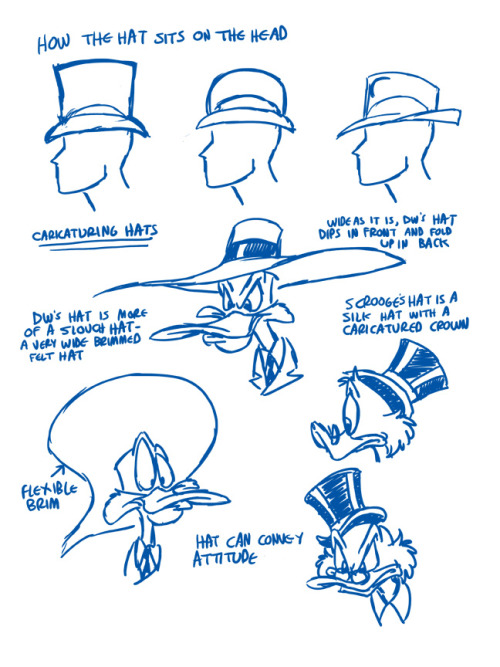
Quick and dirty hat drawing tutorial
One of my biggest pet peeves is the amount of artists (including many comics professionals) that do not draw hats properly. Since most of the characters I draw wear them I get a lot of practice. I thought I’d share the basics with you.
Basic Hat Structure- a hat is made up of a crown (the part that covers your head) and the brim (the part that shades your eyes). The crown should be bigger than the head you draw. Always draw the head shape first and work the hat around that. The brim of a hat is NEVER flat. Hats are meant to keep the head warm and the sun off of your eyes. The front of the brim will fold down to give the eyes as much shade as possible. A band or ribbon runs around the bottom of the crown with a faux bow on the left side, mostly for aesthetic purposes.
Top Hats- These are favored by rich ducks everywhere. A proper top hat is made of silk. A lot of top hat-styled hats that are made of wool or felt are more of a coachman’s hat. Fine for cosplay but rather gauche when you’re drawing the Penguin. The traditional top hat will not have a large band and will have a ribbon around the brim. Some top hats have a crown that will collapse flat.
Bowler Hat or Derby- A short brimmed hat. A ribbon also covers the brim. The crown is rounded and made of hard material.
The Fedora- Not the short brimmed, straw trilbys you see hipsters wearing on the back of their heads. A traditional fedora is made of fur felt and has a large crown with a pinch in the front. A larger brim dips in front and traditionally is worn up in back.
Next lesson- we learn about the Homburg!
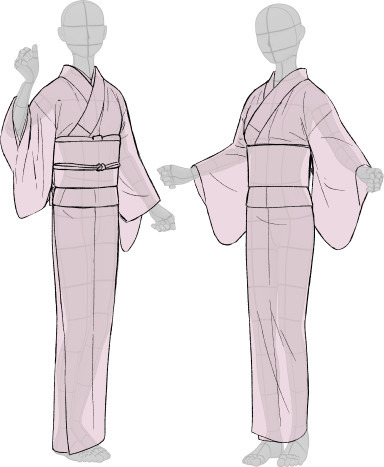
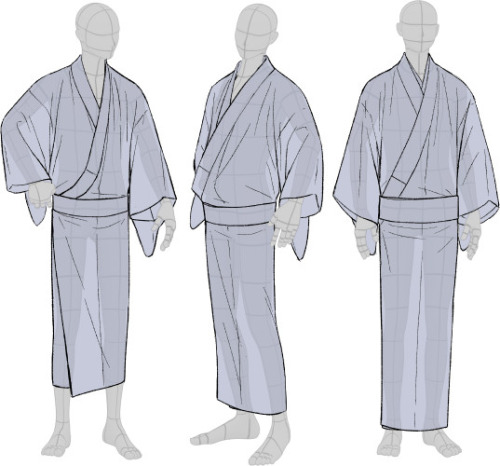
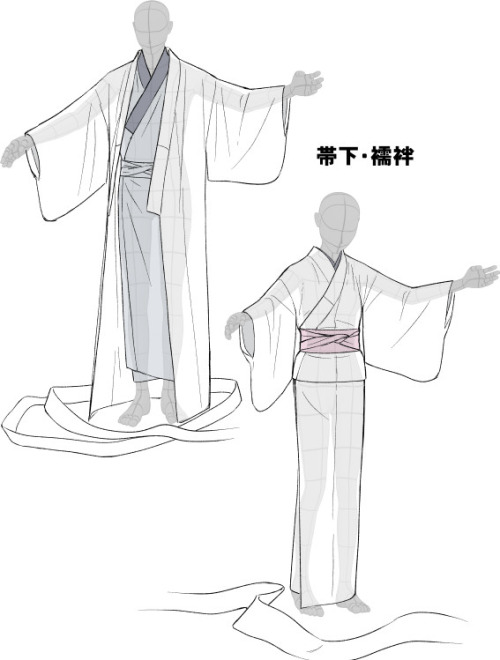
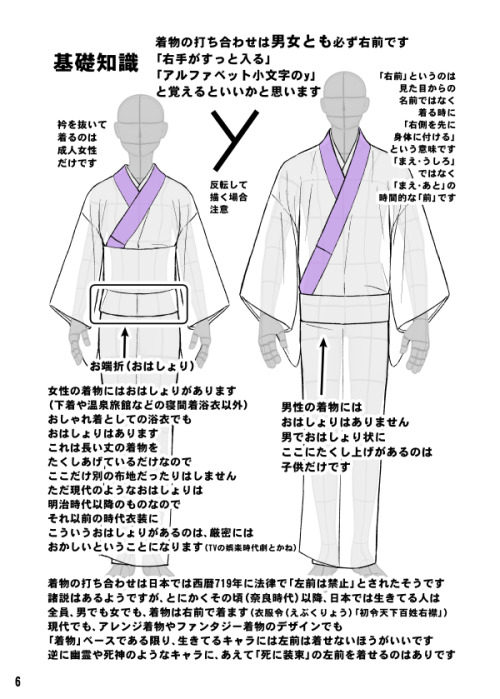
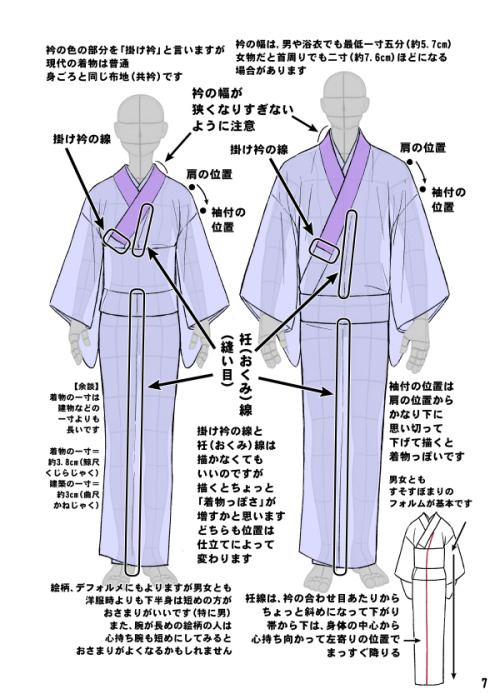
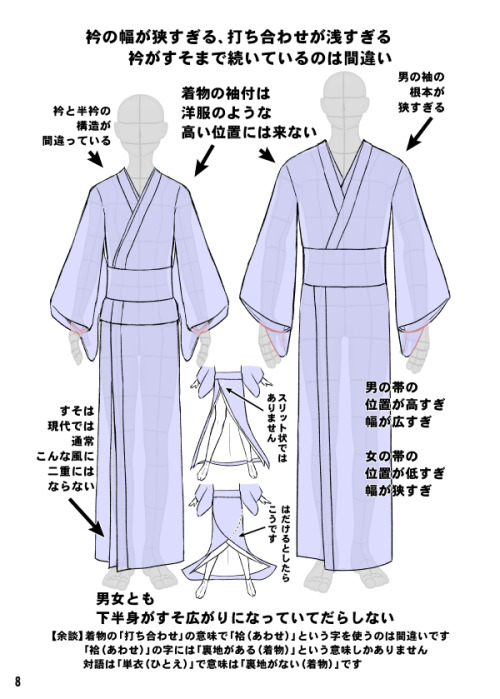
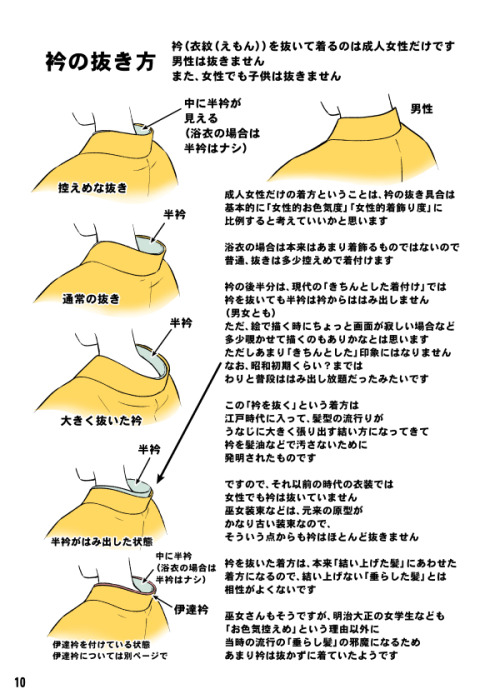

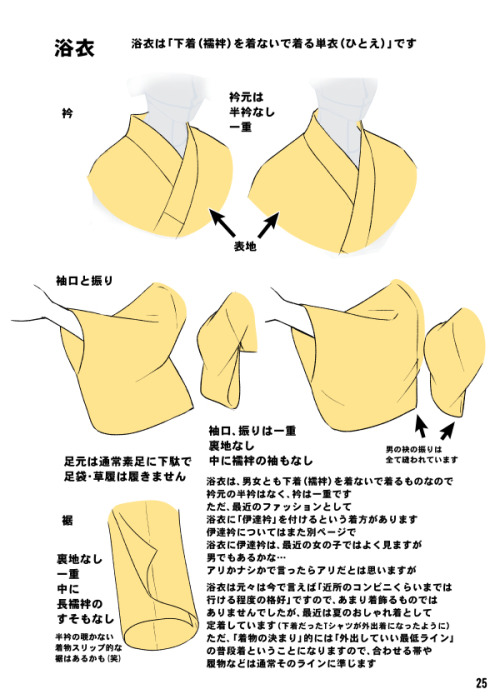
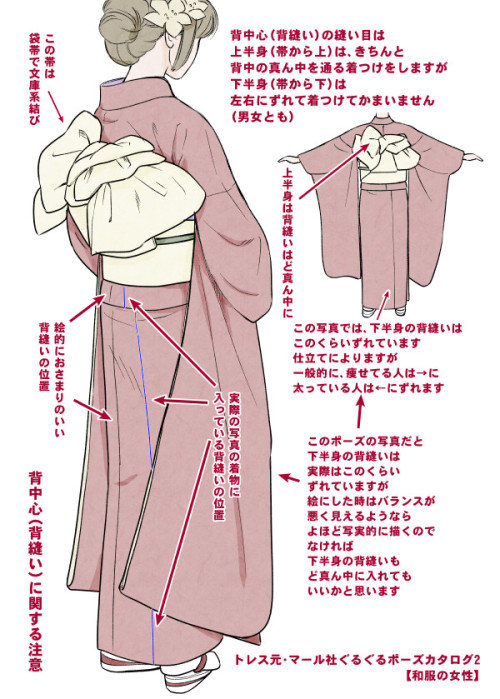
Kimono drawing guide ½, by Kaoruko Maya (tumblr, pixiv, site). Booklet is available in pdf for ¥ 900 here.
Here you can see:
female kimono and yukata (note how the juban underwear peeks when in kimono + how belts differ)
male yukata and kimono (note how the juban underwear peeks when in kimono)
dressing up: male (kimono is not closed yet) and female (kimono closed with datejime belt and ready to put on obi)
differences between female and male kimono once dressed (note how the collars and belts set)
common drawing mistakes (compare with previous picture: shoulders lines are too defined, there is a double hem, collars are narrow, belt is not at the right place etc)
women back collar (the lower the sexier) and men back collar (close to the nape)
back and sleeves differences between men and women
collars and sleeves and view of how kimono drapes around body
Furisode back (long sleeves kimono) and formal furisode obi knot example



Books BTS wants us to read

















because they all deserved better.
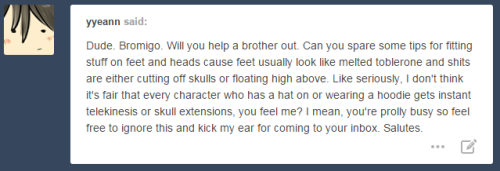
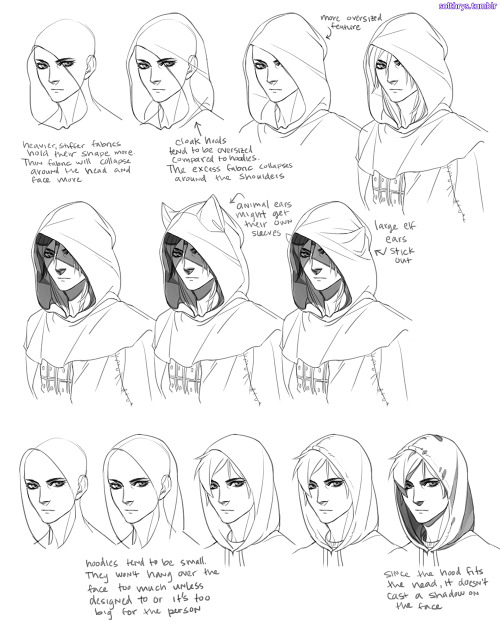

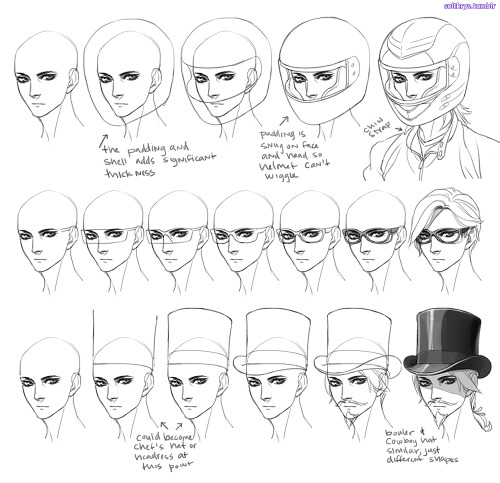
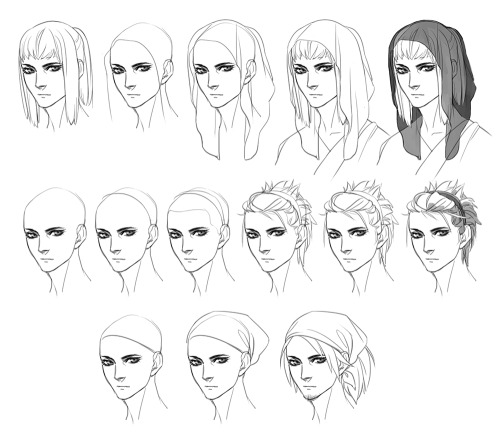
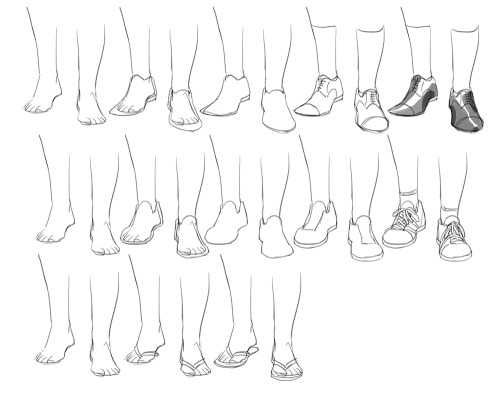
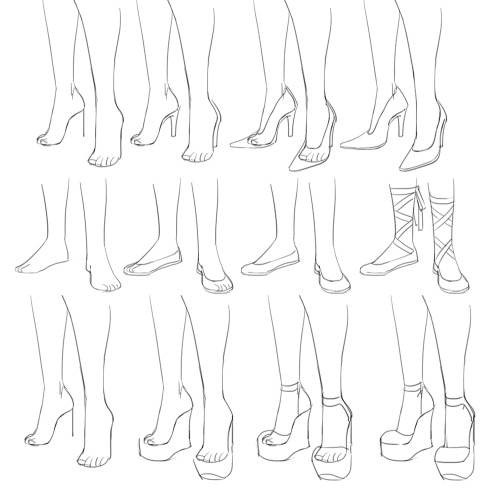
No more melted tomblerones or mising skulls, yyeann!
This is my basic process for pretty much everything I draw. The key is understanding the shape of the garment you’re trying to draw and the shape of the body part you’re putting it on.
Drawing the body first forces you to make the shoe, hat, or clothes fit that body. With practice you’ll be able to skip some steps. This method works the same no matter the perspective or pose. It just relies on your knowledge of what a hat looks like from above, or what the bottom of a shoe looks like. When in doubt, just google refs. Don’t necessarily need the exact angle you’re trying to draw. Look at different pics to give you an idea of how it works in 3d.
Shoes are always a bit tricky because feet are a stupid ass shape.
It might help if you think of hats as a cylinder fitted to the person’s head to help you get the perspective right before you push in detail. note: heads aren’t circles. they’re kind of egg shaped if you look at them from the top.





The Flash is gold
-
 kelkaokai liked this · 6 months ago
kelkaokai liked this · 6 months ago -
 giantcentipedepussy reblogged this · 7 months ago
giantcentipedepussy reblogged this · 7 months ago -
 cool-validvenus-stuff liked this · 1 year ago
cool-validvenus-stuff liked this · 1 year ago -
 scrapbox-in-the-attic reblogged this · 1 year ago
scrapbox-in-the-attic reblogged this · 1 year ago -
 coddamn reblogged this · 1 year ago
coddamn reblogged this · 1 year ago -
 steddiefvcker liked this · 1 year ago
steddiefvcker liked this · 1 year ago -
 carryonmycobaltangel liked this · 1 year ago
carryonmycobaltangel liked this · 1 year ago -
 heckcareoxytwit liked this · 1 year ago
heckcareoxytwit liked this · 1 year ago -
 39musi-c liked this · 1 year ago
39musi-c liked this · 1 year ago -
 giomesabgeta liked this · 1 year ago
giomesabgeta liked this · 1 year ago -
 unforgettable-sensations liked this · 1 year ago
unforgettable-sensations liked this · 1 year ago -
 roselyn-writing liked this · 1 year ago
roselyn-writing liked this · 1 year ago -
 zeppersart liked this · 1 year ago
zeppersart liked this · 1 year ago -
 sheyshocked reblogged this · 1 year ago
sheyshocked reblogged this · 1 year ago -
 sheyshocked liked this · 1 year ago
sheyshocked liked this · 1 year ago -
 adhdbadass2003 liked this · 1 year ago
adhdbadass2003 liked this · 1 year ago -
 robed-article liked this · 2 years ago
robed-article liked this · 2 years ago -
 modarthelp liked this · 2 years ago
modarthelp liked this · 2 years ago -
 thalias-pine-tree liked this · 2 years ago
thalias-pine-tree liked this · 2 years ago -
 didelphim0ss liked this · 2 years ago
didelphim0ss liked this · 2 years ago -
 sukiliske liked this · 2 years ago
sukiliske liked this · 2 years ago -
 r0salyn liked this · 2 years ago
r0salyn liked this · 2 years ago -
 skullwormm liked this · 2 years ago
skullwormm liked this · 2 years ago -
 misterlycanthrope reblogged this · 2 years ago
misterlycanthrope reblogged this · 2 years ago -
 misterlycanthrope liked this · 2 years ago
misterlycanthrope liked this · 2 years ago -
 alsokaz3313 reblogged this · 2 years ago
alsokaz3313 reblogged this · 2 years ago -
 so-many-gay-words reblogged this · 2 years ago
so-many-gay-words reblogged this · 2 years ago -
 so-many-right-words reblogged this · 2 years ago
so-many-right-words reblogged this · 2 years ago -
 rainbowbokchoy reblogged this · 2 years ago
rainbowbokchoy reblogged this · 2 years ago -
 sabrinamte liked this · 2 years ago
sabrinamte liked this · 2 years ago -
 miss-little-chaperone liked this · 2 years ago
miss-little-chaperone liked this · 2 years ago -
 isnw liked this · 2 years ago
isnw liked this · 2 years ago -
 margoteve liked this · 2 years ago
margoteve liked this · 2 years ago -
 traversedmiscellany reblogged this · 2 years ago
traversedmiscellany reblogged this · 2 years ago -
 theprocrastinatingnovel liked this · 2 years ago
theprocrastinatingnovel liked this · 2 years ago -
 glazakerosinom liked this · 2 years ago
glazakerosinom liked this · 2 years ago -
 bluegreen-bg reblogged this · 2 years ago
bluegreen-bg reblogged this · 2 years ago -
 cui-nisi liked this · 2 years ago
cui-nisi liked this · 2 years ago -
 rainbownomja liked this · 2 years ago
rainbownomja liked this · 2 years ago
Right now this is just anything that comes to mind since I'm a complete noob at tumblr. I've been hearing about it for years but I never really felt like I had anything to say. Well all that has changed now and I figured I'd see what all the hype about tumlr is really about. Anyway don't take anything I say too seriously for now...I'll probably change it later when I become more comfortable with this website.
168 posts